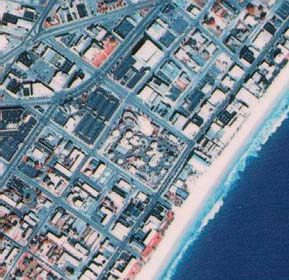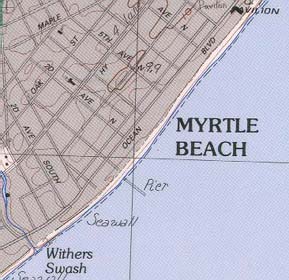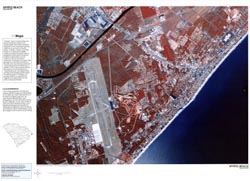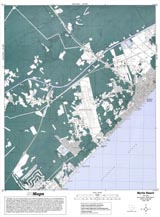 |
||||
Myrtle Beach |
|
Portion of NAPP infrared photograph of the Grand Strand (1989). |
Portion of topographic map of Myrtle Beach from the Myrtle Beach USGS quadrangle (1989). |
Myrtle Beach (NAPP) |
Myrtle Beach (Topo) |
RationaleTravel and tourism has become an increasingly important component of South Carolina's economy over the last thirty years. Tourism contributes both directly and indirectly to the state's economy. About fifty percent of tourist dollars are spent on food service and about twenty percent on lodging. The remainder generates employment in various service related industries, including transportation, recreation, entertainment, and retail trade. Although beaches have always been attractive to tourists, more and more visitors are looking for additional attractions such as amusement parks, theaters, golf courses, campgrounds, and convention facilities. The Myrtle Beach area has expanded to offer many of these extra features while still maintaining the family atmosphere that continues to draw millions of tourists from both in and out of state. Almost forty percent of all tourist dollars generated in South Carolina come from the Myrtle Beach area. Almost one-fifth of all State Park visits are recorded at Myrtle Beach State Park. |
Background InformationDescription of Landforms
Influence of Topography on Historical Events and Cultural Trends
Natural Resources, Land Use, and Environmental Concerns
|




